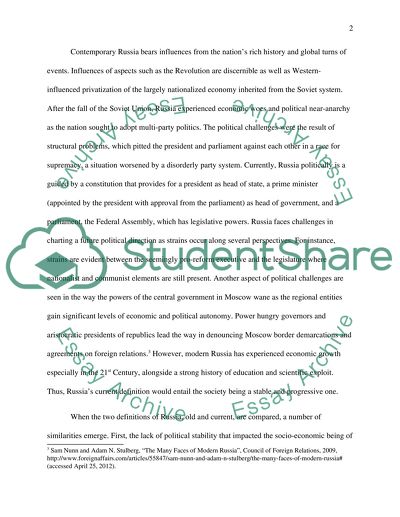A Comparison of Old (Tolstoy's) and Modern Russia Term Paper. Retrieved from https://studentshare.org/history/1449558-what-is-russia-today-s-definition-and-what-it-is
A Comparison of Old (Tolstoy'S) and Modern Russia Term Paper. https://studentshare.org/history/1449558-what-is-russia-today-s-definition-and-what-it-is.


